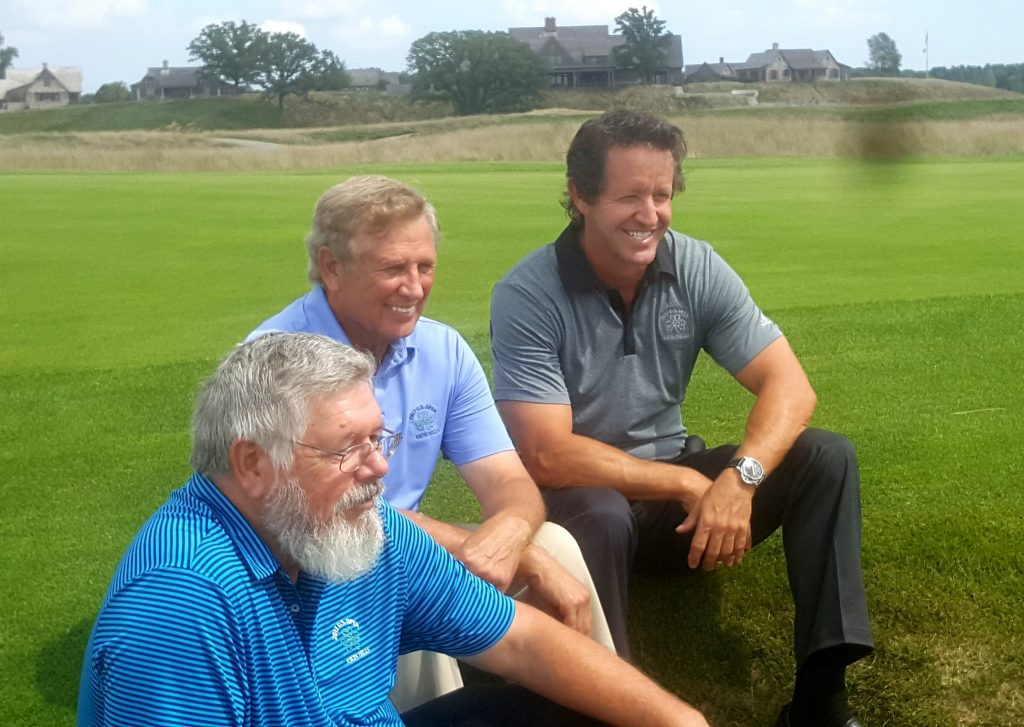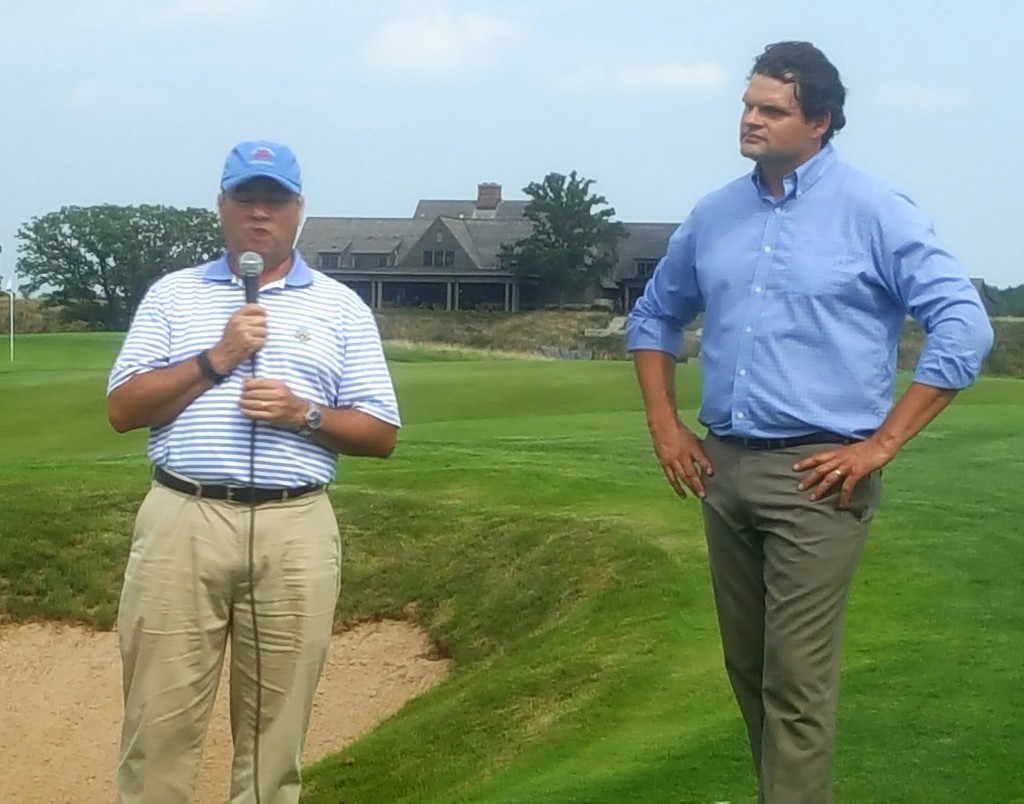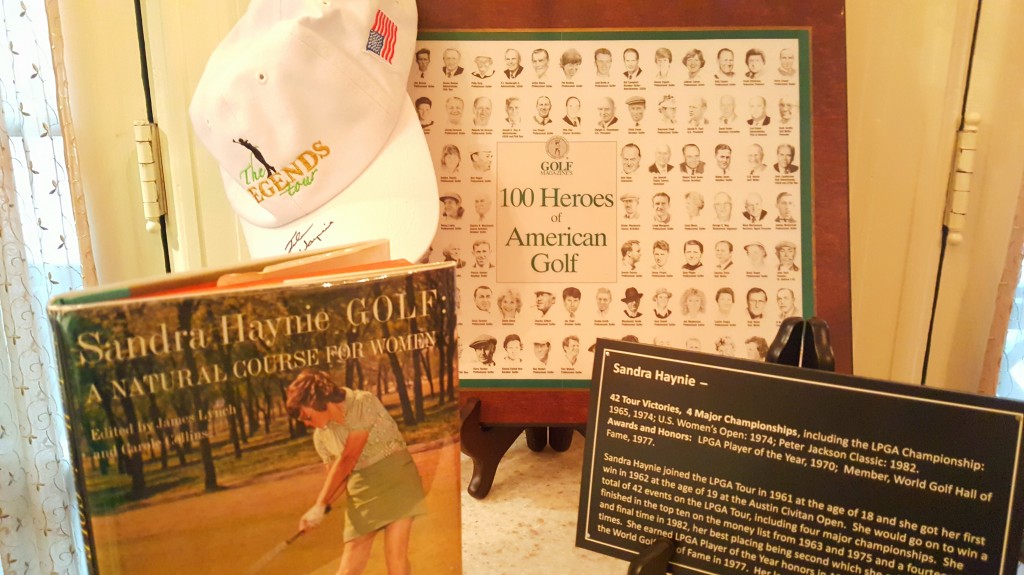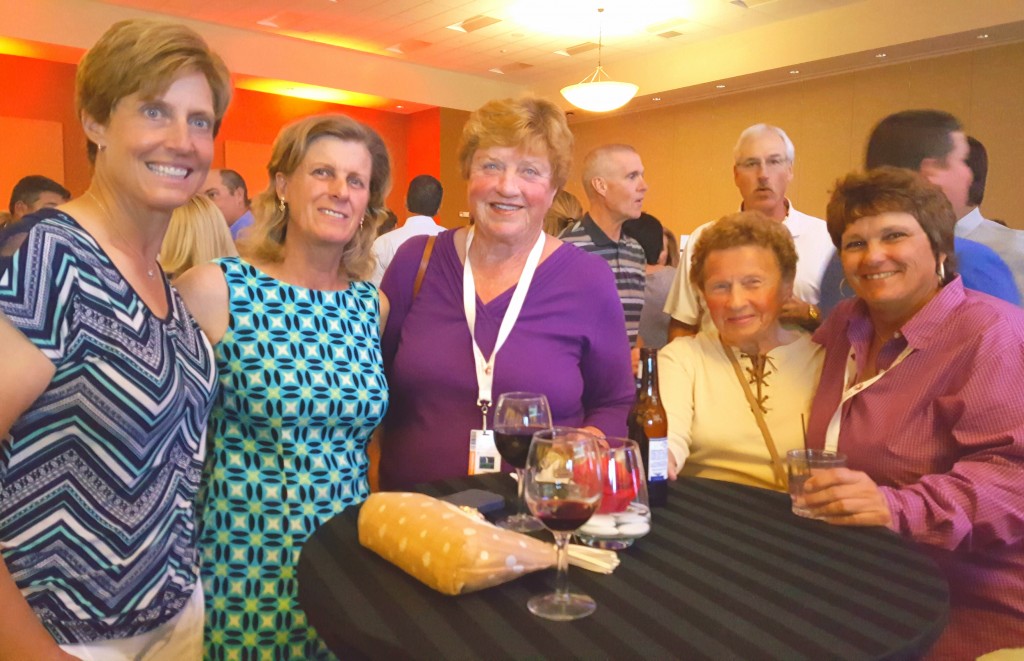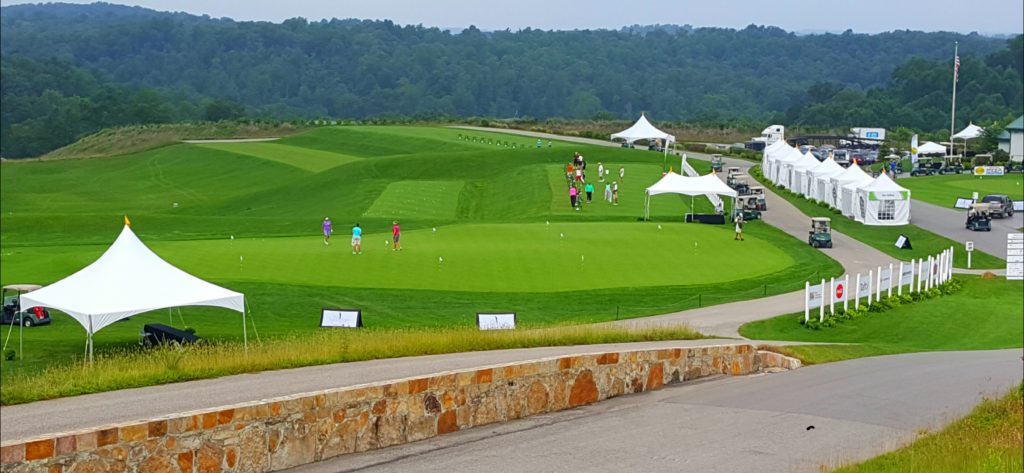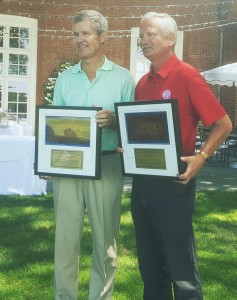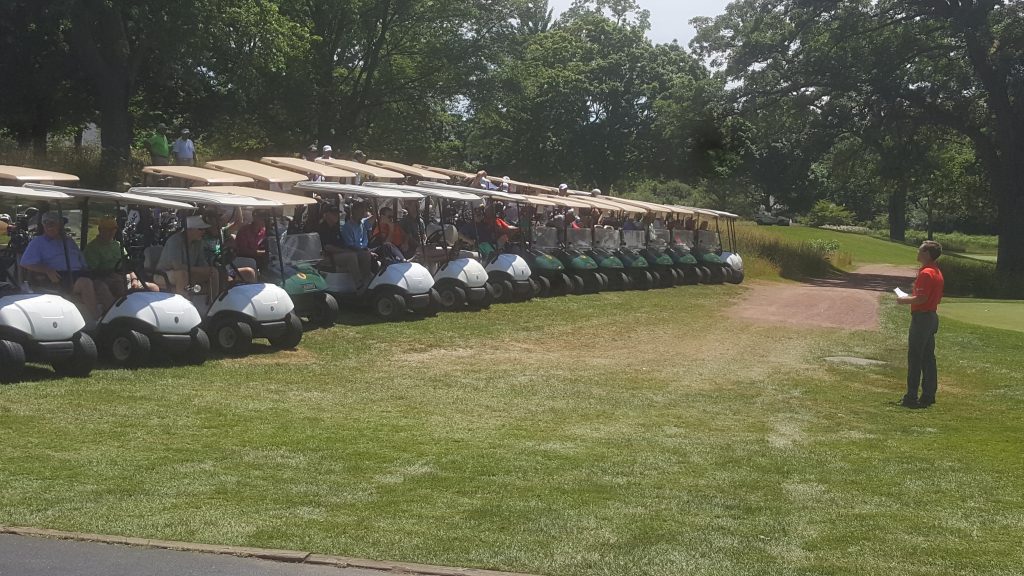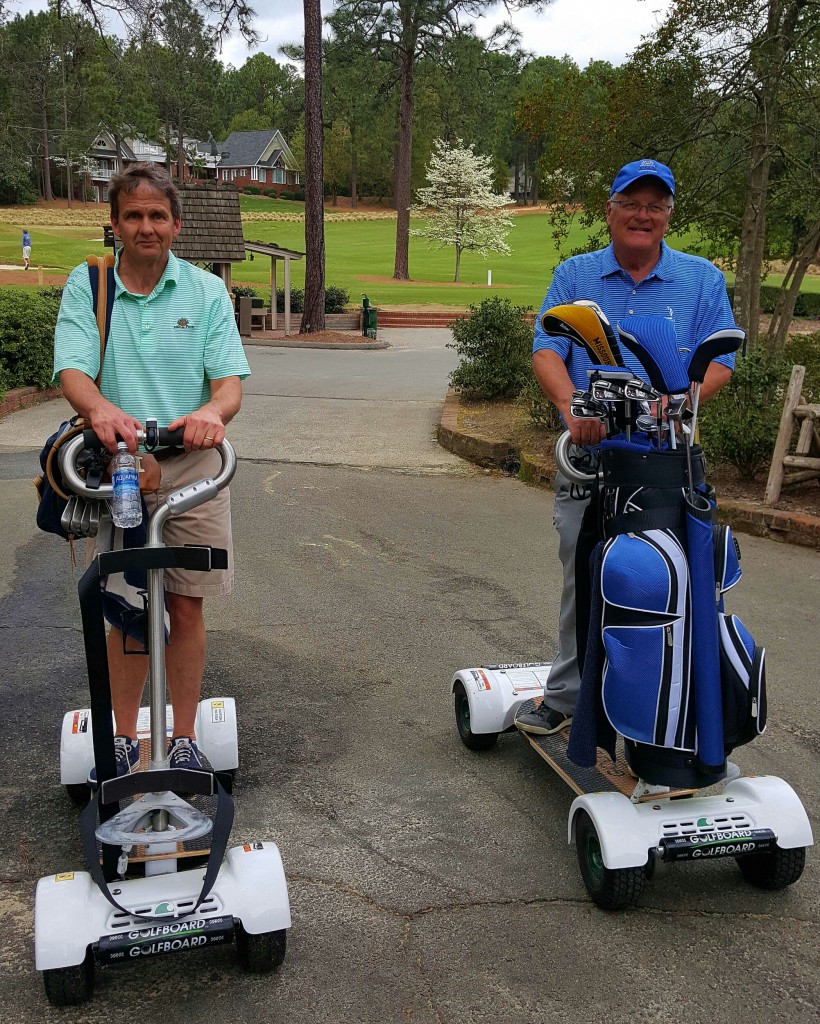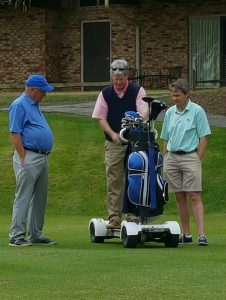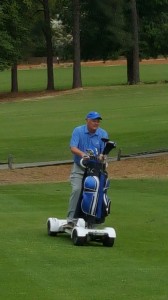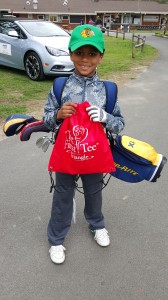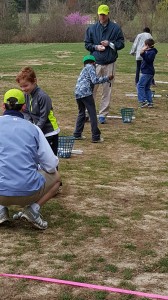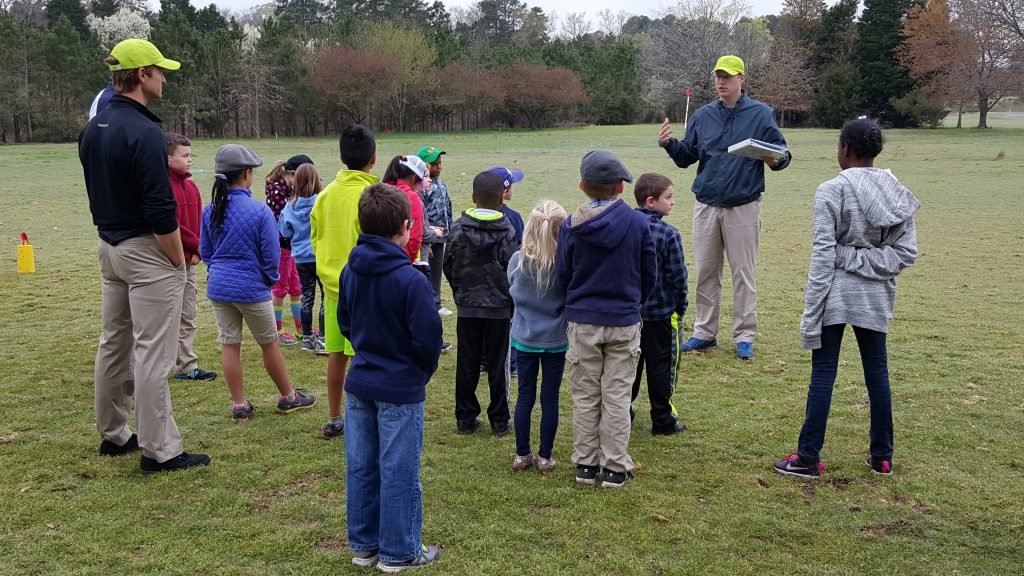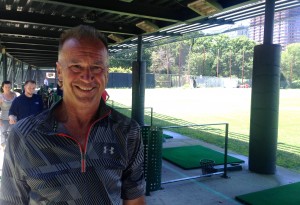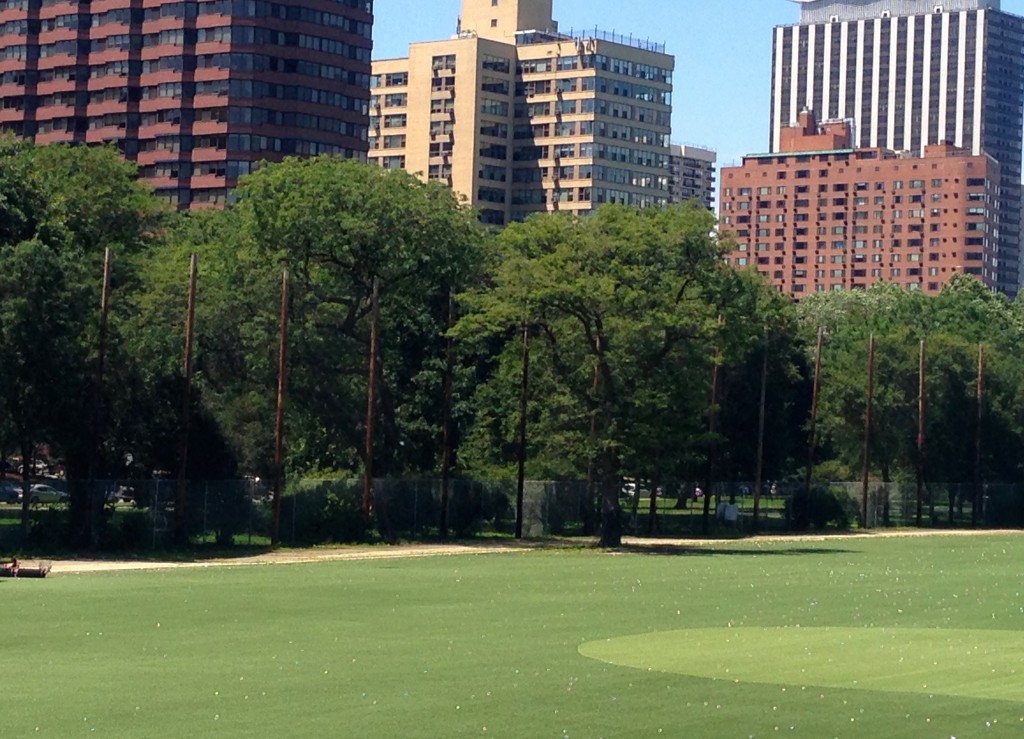This is a milestone year for one of the Chicago area’s very special golf facilities. St. Andrews is turning 90 years old, and only a handful of other golf clubs – private or public — have lasted that long.
Not only that, but St. Andrews’ road to success has been done family style. None of the other historically-rich clubs can match the family longevity that’s evolved at St. Andrews.
The West Chicago club’s story begins in 1926 when architect Edward B. Dearie built the first course. Three years later a second 18-holer, then called Lakewood, was added. One (the first, called St. Andrews) was built as a private club for members, the other (Lakewood) was for daily fee players. Private clubs dominated the game in the Chicago area before that, beginning with the building of Chicago Golf Club – the nation’s first 18-hole course — in 1892.
St. Andrews’ 36-hole facility became the home base for Joe Jemsek in 1938. Born the day before Christmas in 1913, he got involved in golf as a caddie and then a parking lot attendant at Cog Hill, in Lemont, and by age 19 he was a club professional there.
Jemsek gained fame by hitting a 501-yard drive in a long-drive contest at the 1934 Chicago World’s Fair, then moved to St. Andrews in 1938 after his bosses at Cog Hill wouldn’t give him a raise. That’s when the family side of St. Andrews began.
Though he was a competitive player, Jemsek’s goal was to own a golf course and the opportunity arose when St. Andrews owner Frank Hough offered him the facility for $40,000. Using a combination of savings and a loan, Jemsek not only took over ownership of St. Andrew; he also married Hough’s daughter Alice.
Jemsek would later take over the operations – either through ownership or lease agreements — of Cog Hill, Fresh Meadows in Hillside, Pine Meadow in Mundelein and Glenwoodie in Glenwood. He also added two more courses to the 36 at Cog Hill and became most-aptly known nation-wide as “the father of public golf.’’
St. Andrews, though, was his first venture into golf ownership and management. He opened both courses to public lic.
Jemsek, his wife and two children – Frank and Marianne – resided in a home behind the first green of the St. Andrews Course and now Marianne and her husband, Jerry Hinckley, live there. Though still part-time California residents, they became active owners of St. Andrews after Jemsek’s death at age 88 in 2002.
Son Frank Jemsek, meanwhile, has long directed the operations at Cog Hill and Pine Meadow and his family members play various roles in what happens there.
St. Andrews, though, is where it all started. It was the first public course to host a U.S. Open qualifying round in 1947 and the first to offer U.S. Golf Association handicaps to its regular players. Joe Jemsek also hired the legendary woman player Patty Berg as St. Andrews head professional, and she remained on staff for almost 50 years.
Eventually the Lakewood course at St. Andrews was renamed as the Joe Jemsek Course.
Lots of golf courses have come and gone in the Chicago area since the first tee shot was hit at St. Andrews. Many big tournaments have been scheduled at private clubs or Cog Hill, but St. Andrews remains a popular place for golf beginners and diehards alike.
The Hinckleys have brought in their own upgrades. Music on the front lawn has become a Wednesday night fixture, one of many things that sets St. Andrews apart from other public facilities, and those artists move indoors – to the St. Andrews Room – come October. The driving range was expanded more recently and now has hitting bays heated for winter use.
St. Andrews, long a popular destination for weddings as well as all types of golf outings, remains an extraordinary family-oriented operation.
Oldest on the staff is 89-year old Annie Judson, Marianne Hinckley’s aunt and Joe Jemsek’s sister. She has worked at St. Andrews for 65 years in a wide variety of capacities.
Dave Erickson, the head professional and practice range manager, has been employed by Jemsek Golf since 1970 and spent the last 27 years at St. Andrews. His aunt Anabelle was office secretary for many years.
Michelle Bockrath, the pro shop manager as well as marketing and live entertainment coordinator, has been at the club for 32 years – which is still five years short of her mother Jackie Tomaso. She’s worked the Half Way House for 37 years.
When Amos Lapp retired as course superintendent his son John replaced him and, when John retired, his nephew Brian took the job. Between Amos, John and Brian the Lapps have spent 42 years at St. Andrews.
The maintenance crew includes Jaime Cabrera (39 years); Darrell Redmond and Jesus Garcia, who are both 30-year employees; Jim Smith (27 years) and Antonio Garcia (25). Joe Baker was bar manager for over 50 years and his son Jude now holds that position. Three other Bakers are veterans of the bar operation – Dave for 36 years, Courtney for 28 and Brenda for 22. Another bartender, Tom Howell, has been on board for 27 years.
Cheryl Soto, the assistant general manager, is in her 41st year with the club and head ranger Dennis Maher is in his 28th season. Starters Walt Larsen and Don Rericka are 25-year men and Nick Koukos has worked in the pro shop for 26.
Teaching pro Mike Cain has been at St. Andrews for 27 years after starting work there on the maintenance crew in his teen-age years. The maintenance gang also provided a start for Butch Hansen, who has been a starter for 22 years.
Waitresses Susan Hansen, on board for 27 years, and Dee Albrecht, for 22, have also topped the two decade mark and bartender Tracy Page and practice center supervisor Carlos Alanis reached it recently.
And the list goes on. St. Andrews’ centennial is only 10 years away and there are sure to be plenty of long-term employees on hand for the celebration.
